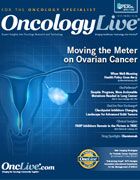Fighting for Success
The first and thus far only PARP inhibitor to gain regulatory approval, olaparib traveled a tortuous path to the 2014 FDA ruling that enabled its use for women with recurrent ovarian cancer.
OncLive Chairman,
Mike Hennessy
Every cancer drug has a creation story, but there are few agents with as fascinating a narrative as that of olaparib (Lynparza). The first and thus far only PARP inhibitor to gain regulatory approval, olaparib traveled a tortuous path to the 2014 FDA ruling that enabled its use for women with recurrent ovarian cancer.
The indication given the drug is incredibly narrow and detailed. Olaparib is approved as monotherapy for patients with deleterious germline BRCA-mutated advanced ovarian who already have been treated with at least 3 lines of prior chemotherapy. Even as the approval was finalized, the research already was showing that a broader population would benefit.
Yet despite that restrictive clinical setting, the approval of the drug was cause for cheer among gynecologic oncologists who had grown frustrated waiting for the era of molecularly targeted therapy to arrive in ovarian cancer.
And it almost never happened. The manufacturer had canceled the maintenance ovarian cancer program for olaparib in 2012 after disappointing overall survival results but decided to reinstate it after subgroup findings for BRCA-mutant tumors were analyzed. Then, the drug had to overcome a negative vote from an FDA advisory panel that wanted to wait for later-stage clinical trials.
Since then, the outlook for this drug has changed dramatically, as we report in this issue of OncologyLive. Our cover story, “Moving the Meter on Ovarian Cancer,” describes olaparib as the harbinger of an exciting new class of agents. In our Clinical Insights report, “PARP Inhibitors Remain in the Picture in TNBC,” we provide an update in the breast cancer field.
Based on the clinical trials that are ongoing and the positive reports that are building about PARPs, we have a feeling that we’re going to be hearing about these agents for quite a few years not only in cancers that affect women but also in a range of other malignancies.
There’s an important lesson here about the arc of development in drug discovery. Who knows how many potentially valuable advances end up falling by the wayside? Although we often hear about the long timeline and high cost of creating new anticancer therapies, we don’t always learn about the winners that almost got away.
Often, it’s the tenacity of a research team that helps push a drug past corporate or regulatory skeptics. It takes that type of determination to battle this most stubborn of diseases. In the case of ovarian cancer, we’re so thankful for the clinical investigators who believed in olaparib.




